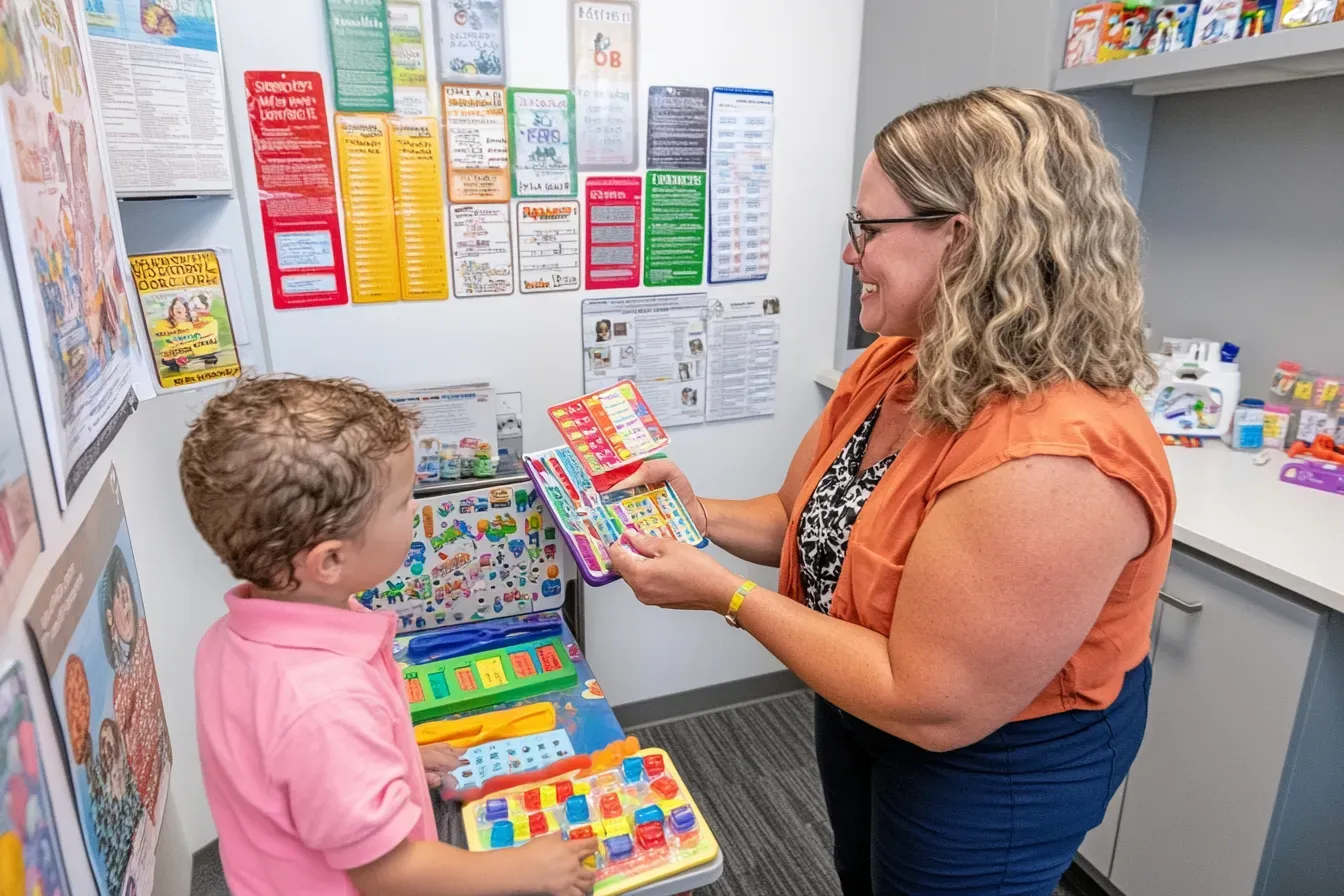Current Student Loan Interest Rates and How They Work for 2026
Many students find it challenging to understand student loan interest rates, making it difficult to plan their loans effectively. If only there were a simpler way to grasp these rates to better manage their student loans.
As an expert in career planning for over ten years, I have researched data from credible sources to create this guide. The average student loan borrower pays around $5,994 in interest over a 10-year repayment period for a $30,030 bachelor's degree loan at a 3.73% interest rate. By reading this article, you will gain insights into current student loan interest rates and learn how to plan your loans more effectively.
Key Things You Should Know About Current Student Loan Interest Rates
- The federal student loan interest rates for 2024-25 are 6.53% for undergraduates, 8.08% for graduates, and 9.08% for PLUS loans (Parent, Grad), applicable to new loans disbursed between July 1, 2024, and June 30, 2025.
- Federal student loan interest rates have fluctuated significantly over the past 12 years, ranging from a high of 6.8% for undergraduates (2006-2012) to a low of 2.75% (2020-2021), with rates increasing from 3.73% (2021-2022) to 4.99% (2022-2023).
- Federal student loan interest rates are uniform across categories, with undergraduates, graduate students, and PLUS loans for parents and graduate students all set at fixed rates of 6.53%, 8.08%, and 9.08%, respectively, for the 2024-25 school year.
- As of 2024, private student loan interest rates range from 3.85% to 15.9% for fixed rates and from 4.98% to 16.7% for variable rates, depending on the lender and type of rate chosen.
- As of May 6, 2024, student loan refinancing rates include about 7.23% for 10-year fixed rates (down from 7.32% the previous week but up from 6.95% a year ago), and variable rates range from 5.28% to 11.99%.
Table of Contents
- What are the current federal student loan interest rates?
- What are the current private student loan interest rates?
- What is the difference between fixed and variable student loan interest rates?
- What are the refinancing rates for student loans?
- How do you calculate student loan interest?
- How do credit scores affect private student loan interest rates?
- How to Navigate Interest Rates for Specialized Education Loans
- Which repayment plans are best for high-interest student loans?
- Can accelerated degree programs reduce overall interest burdens?
- Can online education help reduce overall student loan interest costs?
- What are the benefits of alternative education paths in reducing student loan dependency?
- Are student loan interest rates expected to rise or fall in the future?
- What are the best options for parents with bad credit for securing student loans?
- What government policies impact student loan interest rates?
- How can selecting affordable educational institutions reduce overall loan costs?
- Can shorter education programs lower your overall student loan burden?
- What strategies can help reduce the amount of interest paid on student loans?
- Can student loans be used to cover living expenses effectively?
- Can I Deduct Student Loan Interest on My Taxes?
- How do high student loan interest rates affect long-term financial health?
- Other Things You Should Know About Current Student Loan Interest Rates
Here's What Graduates Have to Say About Current Student Loan Interest Rates
"Paying off my federal student loans was a milestone that marked financial freedom for me. The fixed interest rates allowed me to budget effectively, and now I can focus on saving for my future. It was worth the investment in my education." - Terence
"Managing my federal student loans taught me the value of discipline and planning. With consistent payments and a clear understanding of my interest rates, I was able to pay off my loans ahead of schedule. The relief and sense of achievement are unparalleled." - Duane
"Opting for a private loan was a strategic choice that paid off. The variable interest rates initially seemed daunting, but with diligent management, I took advantage of lower rates and cleared my debt faster than I imagined. It feels great to be debt-free." - Ashley
What are the current federal student loan interest rates for 2026?
The current federal student loan interest rates for the 2024-25 school year are as follows:
- Undergraduate loans: 6.53%
- Graduate loans: 8.08%
- PLUS loans (Parent, Grad): 9.08%
These rates apply to new loans taken out between July 1, 2024, and June 30, 2025.
How do federal student loan interest rates compare to previous years?
Federal student loan interest rates have fluctuated significantly over the past 12 years. According to FinAid, the highest rate for undergraduates was 6.8% from 2006 to 2012. The lowest rate was 2.75% in 2020-2021. In 2021-2022, the rate for undergraduates was 3.73%, which then increased to 4.99% in 2022-2023.
These fluctuations reflect changes in economic conditions and policy adjustments, impacting how much students pay for their loans over time. The recent increase to 6.53% for undergraduates marks the highest rate in recent history.
Are federal student loan interest rates the same for all students?
Yes, federal student loan interest rates are the same for each category of borrowers. This means that every undergraduate student taking out a federal loan for the 2024-25 school year will have an interest rate of 6.53%. Similarly, graduate students will have a rate of 8.08%, while PLUS loans for parents and graduate students will have a rate of 9.08%. These rates apply uniformly within each category, ensuring that all borrowers receive the same terms.

What are the current private student loan interest rates for 2024?
The current private student loan interest rates for 2024 vary based on the type of rate and lender. As of 2024:
- Fixed rates: 3.85% to 15.9%
- Variable rates: 4.98% to 16.7%
According to student loans statistics, the average fixed private student loan rate has risen to 7.97%, up from a record low of 2.81% in December 2021. Similarly, the average 5-year variable rate has increased to 11.14% in June 2024, from a record low of 1.84% in February 2021.
What factors affect private student loan interest rates?
Private student loan interest rates are influenced by several factors:
- Credit score: Higher credit scores typically qualify for lower rates.
- Co-signer: Having a co-signer with good credit can lower rates.
- Loan term: Shorter terms often have lower rates.
- Economic conditions: Interest rates can fluctuate based on the economy.
Are private student loans better than federal student loans in 2024?
Private student loans can sometimes offer lower interest rates than federal loans, but they come with trade-offs. While they might be beneficial for those with excellent credit, they lack the borrower protections of federal loans, such as income-driven repayment plans and loan forgiveness programs. For example, in the 2023-2024 academic year, PLUS loans had an interest rate of 8.05%, and undergraduate Direct Loans were 5.50%, up from 6.28% and 3.73%, respectively, in the 2021-2022 school year. Federal loans are generally a safer option due to these protections, despite the potentially higher interest rates.

What is the difference between fixed and variable student loan interest rates?
Fixed student loan interest rates remain the same throughout the life of the loan, providing predictable monthly payments. Variable interest rates, on the other hand, can change over time based on market conditions, leading to fluctuating monthly payments.
Fixed rates are often preferred for their stability and predictability, making it easier to budget for repayments. Variable rates can start lower than fixed rates but carry the risk of increasing, which can lead to higher costs over time.
Can you switch from a variable to a fixed interest rate on a student loan?
Yes, you can switch from a variable to a fixed interest rate on a student loan through refinancing. Refinancing involves taking out a new loan to pay off the existing one, allowing you to choose a different interest rate structure. However, refinancing federal loans with a private lender will cause you to lose federal protections like income-driven repayment plans and loan forgiveness programs. It's important to consider the pros and cons before making the switch.
What are the current refinancing rates for student loans?
The current refinancing rates for student loans as of May 6, 2024, show:
- 10-year fixed-rate: Approximately 7.23%, down from 7.32% the previous week but higher than 6.95% a year earlier, according to Credible.
- Variable rates: Typically range from 5.28% to 11.99% for refinanced student loans.
Borrowers typically have a credit score of 760 and an average income of $106,000 when refinancing their student loans.

Can you refinance federal student loans with a private lender?
Yes, as I've explained above, you can refinance federal student loans with a private lender, not just to shift from a variable rate to fixed rate, but to lower the interest rate or change your repayment terms. Again, refinancing federal loans with a private lender means losing federal benefits like income-driven repayment plans and loan forgiveness options. It's important to weigh the savings against the loss of these protections before refinancing.
How do you calculate student loan interest?
Calculating student loan interest involves a straightforward formula based on the loan's principal amount, annual interest rate, and time period:
Formula: Interest = Principal × Interest Rate × Time/365
- Interest: Total interest accrued.
- Principal: Initial loan amount borrowed.
- Interest Rate: Annual interest rate expressed as a decimal.
- Time: Number of days for which interest is being calculated (typically 365 days in a year).
Steps to calculate:
- Divide the annual interest rate by 365 to get the daily interest rate.
- Multiply the daily interest rate by the principal to find the daily interest amount.
- Multiply the daily interest amount by the number of days to calculate the total interest accrued over that period.
How do credit scores affect private student loan interest rates?
A borrower’s credit score is one of the most critical factors influencing the interest rates of private student loans. Lenders evaluate credit scores to assess the borrower's reliability in repaying the loan. Higher credit scores usually lead to lower interest rates, as they indicate a reduced risk of default for the lender. Conversely, borrowers with poor or no credit history may face higher rates or require a co-signer to secure favorable terms.
Interestingly, some private student loan providers offer options that do not heavily emphasize credit scores. For borrowers who lack an established credit history, exploring student loans no credit check options can be a viable alternative. These loans are designed to offer access to funding without stringent credit requirements, although they typically come with unique terms and conditions. It’s essential to compare multiple lenders and consider both the immediate benefits and the long-term costs before selecting such options.
For borrowers aiming to improve their creditworthiness, steps like paying off existing debts, reducing credit card utilization, and avoiding missed payments can significantly affect interest rate offers over time. This proactive approach increases access to more affordable loans and strengthens overall financial health.
How to Navigate Interest Rates for Specialized Education Loans
When it comes to specialized programs like cosmetology school, understanding how interest rates apply can help borrowers manage their finances more effectively. Unlike traditional undergraduate or graduate loans, specialized education loans often have unique terms and conditions, which can impact your overall repayment strategy.
Borrowers pursuing careers in cosmetology should explore targeted financial aid options, including federal loans, private loans, and scholarships, specifically designed for their program of study. Federal loans typically offer the most borrower protections, while private loans may cater to cosmetology students with flexible underwriting terms. It's crucial to compare interest rates, repayment terms, and the availability of deferment or forbearance options before committing to a loan.
For those wondering how to afford cosmetology school, managing interest rates early on is a key strategy to minimize debt post-graduation. By reviewing funding options tailored to such specialized programs, borrowers can reduce financial strain and achieve greater career flexibility in the future. Prioritizing manageable repayment options ensures that long-term goals are not compromised by immediate financial obligations.
Which repayment plans are best for high-interest student loans?
For high-interest student loans, the best repayment plans are typically income-driven repayment plans (IDR) and refinancing options. These plans can help manage monthly payments and reduce the overall interest burden.
- Income-Based Repayment (IBR): Monthly payments are capped at 10-15% of your discretionary income.
- Pay As You Earn (PAYE): Payments are generally 10% of your discretionary income but not more than the standard 10-year repayment plan amount.
- Revised Pay As You Earn (REPAYE): Similar to PAYE, but available to more borrowers.
- Income-Contingent Repayment (ICR): Payments are the lesser of 20% of discretionary income or the amount you would pay on a fixed 12-year plan, adjusted for income.
How does an income-driven repayment plan work with interest rates?
Income-driven repayment plans adjust monthly payments based on your income and family size, which can make managing high-interest loans easier. While these plans can extend the repayment period, they offer benefits such as:
- Interest Subsidies: In some plans, the government pays part of the interest if your monthly payment doesn't cover it.
- Interest Forgiveness: After making consistent payments for 20-25 years, the remaining loan balance may be forgiven.
f
Pursuing an accelerated degree can shorten the time spent in school and enter the workforce sooner, directly reducing the period over which interest accumulates. By completing programs faster, borrowers may benefit from earlier repayment initiation and potentially lower overall financing costs. In addition, accelerated degree options frequently help mitigate extended living expenses and tuition inflation associated with longer study durations. Considering these factors, evaluating options like accelerated school programs can serve as a strategic financial decision to better manage long‐term loan burdens.
Can online education help reduce overall student loan interest costs?
Selecting a more affordable education pathway can lower the total amount borrowed and, consequently, reduce interest accumulation over time. By opting for programs that offer lower tuition and fees, borrowers may decrease the principal balance on which interest is calculated. Recent comparative analyses indicate that factors such as reduced overhead and alternative delivery methods can make online learning a financially strategic option. For further insights on the cost advantages of digital instruction models, consider whether is online college cheaper than community college and assess if an online program aligns with your long-term financial objectives.
What are the benefits of alternative education paths in reducing student loan dependency?
Alternative education paths, including vocational training and technical certificates, offer lower upfront costs and shorter study durations that can mitigate the need for extensive borrowing. For instance, programs such as 6-month trade school programs provide a direct pathway to employment with competitive wages, thereby reducing long-term debt and accumulated interest. These alternatives also align closely with current labor market demands, enhancing career prospects and financial stability without incurring high education-related costs.
Are student loan interest rates expected to rise or fall in the future?
Student loan interest rates are expected to rise in the near future due to various economic factors and policy changes. The primary reasons for these fluctuations include:
- Economic Conditions: Changes in the economy, such as inflation and unemployment rates, can influence interest rates. As inflation increases, interest rates tend to rise to curb spending and stabilize the economy.
- Federal Reserve Policies: Decisions made by the Federal Reserve, such as adjusting the federal funds rate, directly impact student loan interest rates. When the Federal Reserve raises rates to control inflation, student loan interest rates also rise.
- Government Policies: Legislative changes and federal budget allocations can affect student loan interest rates. New policies to reduce the federal deficit or alter student loan programs can lead to higher interest rates.
Keeping an eye on economic trends and policy announcements can help borrowers anticipate changes and make informed decisions about their student loans.
What are the best options for parents with bad credit for securing student loans?
Parents facing challenging credit situations can access specialized lending options that address their specific financial profiles. Exploring these alternatives can provide more favorable interest rates and flexible repayment terms compared to traditional loans. For detailed insights into tailored financing solutions, review our article on student loans when parents have bad credit. Evaluating eligibility requirements and comparing lender conditions is crucial to ensure alignment with long-term financial goals.
What government policies impact student loan interest rates?
These policies include decisions made by Congress, actions by the Federal Reserve, and budgetary measures.
- Congressional Legislation: The Bipartisan Student Loan Certainty Act of 2013 linked federal student loan interest rates to the 10-year Treasury note, resulting in variable rates tied to market conditions instead of fixed rates set by Congress.
- Federal Reserve Actions: The Federal Reserve increase in the federal funds rate several times in 2022 in response to rising inflation, is a good example, leading to higher interest rates for federal student loans.
- Federal Budget Decisions: In fiscal year 2019, increased federal funding for education under the budget deal helped keep student loan interest rates relatively low compared to previous years.
- Loan Forgiveness Programs: The Public Service Loan Forgiveness (PSLF) program, introduced in 2007, provided loan forgiveness for borrowers working in public service, encouraging more students to take federal loans due to the potential for loan forgiveness.
How can selecting affordable educational institutions reduce overall loan costs?
Evaluating educational institutions based on overall cost can directly reduce the principal amount borrowed and, consequently, the total interest accrued. Analyzing factors such as tuition fees, available grants, and scholarship opportunities offers a strategic pathway to limit debt accumulation without sacrificing academic quality. Prospective students should compare institutions’ fee structures and support services to optimize their financial planning and long-term repayment outcomes. For insight into budget-friendly options, consider exploring online colleges that accept FAFSA in Texas.
Can shorter education programs lower your overall student loan burden?
Shorter educational pathways can significantly reduce total borrowing costs by lowering tuition fees and shortening the interest accumulation period. Focused programs minimize both the duration of study and the borrowed principal, resulting in a reduced overall interest burden. Evaluating accelerated options, such as 6-month associate degree programs online, enables students to enter the workforce sooner and begin repaying lower loan amounts. This targeted approach requires examining program duration, direct costs, and projected earnings to ensure alignment with long-term financial objectives.
What strategies can help reduce the amount of interest paid on student loans?
Implementing these methods can save money over the life of the loan and make repayment more manageable.
- Make Extra Payments: Paying more than the minimum each month reduces the principal balance faster, decreasing the total interest paid over time. Even small extra payments can make a significant difference.
- Pay During Grace Period: Start making payments during the grace period or while still in school. This reduces the amount of interest that accrues, especially on unsubsidized loans.
- Refinance Your Loans: Refinancing student loans can lower your interest rate if you have a good credit score and stable income. This can significantly reduce the amount of interest paid over the loan’s term.
- Choose a Shorter Repayment Plan: Opting for a shorter repayment term can increase monthly payments but reduce the overall interest paid. A 10-year plan, for example, will accrue less interest than a 20-year plan.
- Automatic Payments: Many loan servicers offer an interest rate discount if you set up automatic payments. This can be a simple way to reduce your rate slightly.
- Pay Bi-Weekly Instead of Monthly: Making bi-weekly payments instead of monthly ones results in an extra payment each year. This can reduce the principal faster, saving on interest.
An advice to those who are yet to enroll in college, If you know how to start saving for college, you'll have less trouble dealing with student debt in the future.
Can student loans be used to cover living expenses effectively?
Certain student loan programs allow borrowers to allocate funds toward living expenses when explicitly stated in the loan terms. Evaluating eligibility criteria and loan structures is essential to ensure that such allocations align with sustainable budgeting practices. Borrowers should review program guidelines and weigh alternative financing options to mitigate the risk of accumulating unnecessary debt. Detailed considerations on managing non-tuition costs are available through student loans for living expenses.
Can I Deduct Student Loan Interest on My Taxes?
Borrowers meeting IRS income criteria may deduct qualified student loan interest—up to $2,500—from their taxable income. This deduction reduces the overall cost of borrowing by lowering taxable income, though it is subject to phase-out ranges and other eligibility conditions. Taxpayers should consult the latest IRS guidelines or a tax professional to verify qualification. In some cases, pursuing further education through cheap master degrees online can complement a long-term financial strategy by balancing tuition investments with debt management.
How do high student loan interest rates affect long-term financial health?
High student loan interest rates can significantly impact a borrower's long-term financial stability. Elevated interest amounts increase the total repayment burden, thereby limiting available funds for savings, retirement investments, or emergency reserves. This situation can also influence creditworthiness if payment challenges arise, as a lower credit score may restrict access to better refinancing options. Borrowers should routinely compare offers to secure a low interest student loan that aligns with their long-term financial objectives, helping to mitigate the adverse effects of sustained high interest on overall financial health.
Key Findings
- Federal student loan interest rates have varied significantly over the past 12 years, reaching a high of 6.8% for undergraduates and a low of 2.75%. The recent increase to 6.53% marks one of the highest rates in recent history, reflecting changes in economic conditions and policy adjustments.
- Private student loan interest rates in 2024 range widely from 3.85% to 15.9% for fixed rates and 4.98% to 16.7% for variable rates, influenced heavily by factors such as credit scores, loan terms, and economic conditions.
- Refinancing rates for student loans as of May 2024 show a 10-year fixed rate of about 7.23%, which fluctuates based on weekly adjustments but has increased from previous years, affecting borrower decisions on loan consolidation.
- Income-driven repayment plans (IDR) are recommended for managing high-interest student loans, offering benefits like interest subsidies and potential loan forgiveness after 20-25 years of consistent payments, helping borrowers cope with varying interest rates over time.
- Government policies, including decisions by the Federal Reserve and congressional legislation like the Bipartisan Student Loan Certainty Act of 2013, directly impact student loan interest rates, influencing federal and private lending conditions.
Other Things You Should Know About Current Student Loan Interest Rates
Why is interest so high on student loans?
Interest rates on student loans are high due to various factors, including government policies, economic conditions, and risk assessments by lenders. The Federal Reserve’s rate hikes, inflation, and the borrower's credit risk contribute to these rates. In 2024, the average fixed private student loan rate rose to 7.97%, reflecting these economic influences. Government policies, such as interest rate formulas and caps, also significantly determine rates. Additionally, higher risk assessments by private lenders result in elevated interest rates to compensate for potential defaults.
What is a good private student loan interest rate?
A good private student loan interest rate is typically below the current average rates, which were 7.97% for fixed rates and 11.14% for variable rates in 2024. Rates below these averages can be considered favorable. Borrowers with excellent credit might secure rates closer to historical lows, such as the 2.81% fixed rate seen in December 2021. Factors like the borrower’s credit score, income, and choice between fixed and variable rates impact the final rate offered.
Are federal student loan interest rates the same for all students?
Yes, federal student loan interest rates are the same for all students within each loan category. For the 2023-2024 academic year, undergraduates have a rate of 5.50% for Direct Subsidized and Unsubsidized Loans, while Direct PLUS Loans for parents and graduate students are set at 8.05%. These rates are standardized regardless of the student's credit score or income, ensuring equal borrowing conditions for all federal loan recipients.
References:
- Carter, M. (2024, May 14). Student loan refinance interest rates edge down for 5- and 10-Year loans. Credible. https://www.credible.com/blog/refinance-student-loans/student-loan-refinance-rates/
- Crunching the numbers: Understanding PLUS loan interest rates. (2024, June). Faster Capital. Retrieved June 28, 2024, from https://fastercapital.com/content/Crunching-the-Numbers--Understanding-PLUS-Loan-Interest-Rates.html
- Hahn, A. (2024, June). 5- and 10-Year Private Student Loan Interest Rates Rise. Credible. Retrieved June 28, 2024, from https://www.credible.com/student-loans/student-loan-interest-rates
- Historical Federal Student Loan Rates. (n.d.). Finaid. Retrieved June 28, 2024, from https://finaid.org/loans/historicalrates/


































